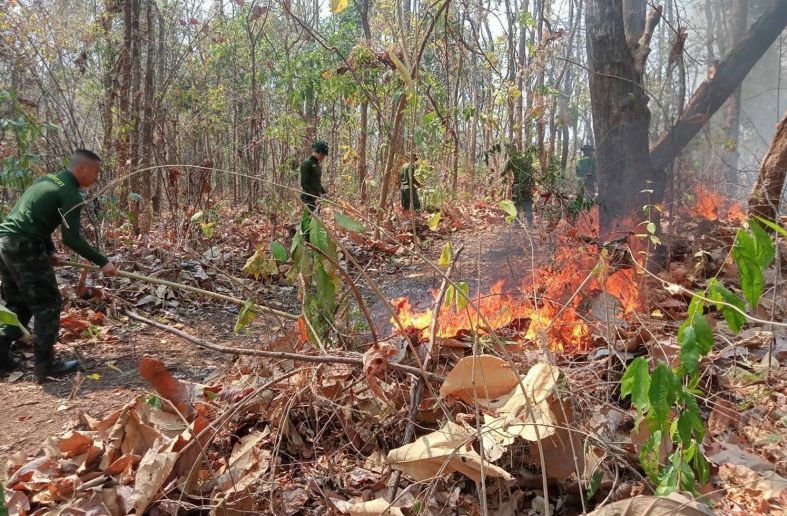Northern Thailand sees thousands of fire hotspots

Northern Thailand is seeing thousands of fire hotspots, with some 2,201 detected yesterday. The majority of these hotspots are located in conservation forests, according to the Region 3 centre for prevention and mitigation of air pollution.
The upper part of the region had 1,388 hotspots, while the lower north had 813. Provinces with the highest number of hotspots included Tak, Uttaradit, Nan, Phrae, and Lampang. Of the total hotspots, 1,214 were in conservation forests, 783 in reserved forests, and 25 in agricultural land reform areas.
From December 1 to February 28, northern Thailand had 31,971 hotspots, Bangkok Post reported. The number of hotspots during the same period in 2022 was 13,351. In 2021, the number was 33,430. The increase in hotspots is a major factor in raising PM2.5 levels above the government-set safe level of 50 microgrammes per cubic metre in most northern provinces.
Satellite Suomi NPP detected a total of 3,768 hotspots across the country on February 28, the highest number since January 1. Geo-Informatics and Space Technology Development Agency (Gistda) reported that the five provinces with the highest number of hotspots were Kanchanaburi, Tak, Uttaradit, Nan, and Phrae.
Thailand had the most hotspots in the region, followed by Laos, Myanmar, Cambodia, and Vietnam. Most hotspots in Thailand were in conservation forests, national forest reserves, agricultural areas, community areas, agricultural land reform areas, and along highways.
Air quality in Thailand’s north and northeast has deteriorated over the years, mostly due to farmers burning waste, and villagers lighting fires in forests. In addition to farmers burning waste, villagers often light fires in forests while they hunt for animals, pick produce, or clear plants ahead of the rainy season.
But it’s not just northern Thailand that’s suffering from unhealthy PM2.5 levels. Areas across Thailand are once again battling with the problem.
Last week in Pattaya, the health-hazardous dust level rose to 174 microgrammes per cubic meter. AQI readings above 100 are considered “unhealthy” (red), above 200 are considered “very unhealthy” (purple) and beyond 300 are considered “hazardous.”
The unhealthy dust covered several areas in Pattaya, including the south, central, and north Pattaya roads. The dust level had remained dangerously high since the beginning of February according to officials.
Last month, the country’s capital city of Bangkok was ranked the third worst city in the world for air pollution after PM2.5 dust reached unhealthy levels. Bangkok’s thick levels of dust were only beaten by Mumbai in India at 207 and Lahore in Pakistan.

Latest Thailand News
Follow The Thaiger on Google News:


























